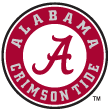The record number of underclassmen declaring their eligibility for the 2012 NFL draft will make draftniks quite happy, but their going pro could cause some consternation among those who follow the teams they are leaving behind.
The period from now until signing day is when college teams reload for future seasons, but several players already on rosters will be called upon to replace the impact players that left early for the NFL.
We conducted an in-depth tape and metric review of five teams that will have to put together replacement plans: Alabama, LSU, Oklahoma State, Oregon and South Carolina. Here's how these teams figure to fill the voids left by their departed stars in 2012.

Alabama Crimson Tide
Early entry: CB Dre Kirkpatrick
Replacement plan: Dee Milliner
The BCS national champion's secondary seemed to take a big hit when Kirkpatrick declared for the draft, but the truth of the matter is that Milliner ought to be a more-than-capable replacement.
The evidence for this statement can be found in the numbers that were culled from a tape review of a seven-game sample of the strongest passing offenses the Crimson Tide faced in 2011 (Penn State Nittany Lions, Arkansas Razorbacks, Florida Gators, Mississippi Rebels, LSU [twice] and Auburn Tigers).
In those contests, Kirkpatrick was targeted with a pass 23 times and allowed a completion or defensive penalty on eight plays. He allowed the opposing receivers to gain 152 yards and three touchdowns. That equates to 6.6 yards per attempt.
By comparison, Milliner was targeted 12 times and allowed three completions and zero defensive penalties while snagging one interception. The completion rate is fantastic, but he did allow 100 yards on the completions, which brings his YPA mark to 8.3.
That actually sounds bad, but more than half of those yards occurred on a 59-yard gain against the Rebels where Milliner was caught looking in the backfield and let a Rebels wide receiver get behind him uncovered. Take that one play out and Milliner's YPA drops to a ridiculously low 3.7.
That is not to say that plays of that caliber should be ignored, but that type of mental error can be corrected as Milliner gets more playing time. The odds that he equals or betters Kirkpatrick's YPA look to be very good, which could provide a stabilizing effect to a Bama secondary that is losing a lot of talent from its 2011 unit.

LSU Tigers
Early entry: CB Morris Claiborne
Replacement plan: Tharold Simon
This review provided the biggest shock of the entire analysis. Going into the seven-game sample (Oregon, West Virginia Mountaineers, Auburn, Alabama [twice], Arkansas and Georgia Bulldogs), the big question was whether the Honey Badger, Tyrann Mathieu, would be able to replace Claiborne as this team's best cornerback.
The first shock is that Claiborne is not quite as good as is generally thought: 25 targets, 12 completions/defensive penalties, 188 yards, 7.5 YPA, one touchdown and three interceptions. The interception total is quite good, but the YPA mark against the toughest passing offenses on the Tigers' schedule shows that Claiborne may be more of a ballhawk than a coverage player.
Mathieu certainly looks to be capable of becoming a top-notch collegiate ballhawk, but he had some significant coverage issues (25 targets, 14 completions for 221 yards) that led to an unacceptable 8.8 YPA. LSU will need him to do a better job before cutting him loose to go after passes more often.
That mindset leads to the second shocking item, which is that Simon was head and shoulders above Mathieu and Claiborne in coverage last season: 30 targets, 12 completions, 108 yards, 3.6 YPA. The YPA wasn't just an anomaly based on facing short passes either, as Simon allowed only two completions for 35 yards on 15 vertical targets (those thrown 11 or more yards downfield).
It should be noted that Simon allowed zero completions in eight stretch vertical targets (those thrown 20 or more yards downfield) and picked off two of those passes, so it is possible he could actually take over the ballhawk and coverage roles from Claiborne and leave Mathieu to focus on improving his YPA -- and making the type of plays that led to his being named a Heisman finalist in 2011.

Oklahoma State Cowboys
Early entry: WR Justin Blackmon
Replacement plan: Multiple WRs
The Cowboys look to be in rough shape heading into the offseason in that they are losing their starting quarterback (Brandon Weeden) in addition to a first-round-caliber wide receiver (Blackmon). They are also losing three of their other top wideouts (Josh Cooper, Hubert Anyiam and Colton Chelf) to graduation.
Getting back to their 2011 production level won't be easy without those five, but it won't be impossible either. Exhibit A for this contention can be found in the metrics for the Cowboys' top wide receivers last season (from an 11-game sample).
The underclassmen nearly outperformed Blackmon this past season.
Exhibit B is Mike Gundy's history of getting top production out of his passing game. Since 2006, Gundy's starting quarterback has posted a passer rating of 148 or higher in all but one season, and that was before the Cowboys started getting better players in the recruiting wars. Gundy should be able to get a high level of performance out of his passing game again in 2012.

Oregon Ducks
Early entries: QB Darron Thomas, RB LaMichael James
Replacement plan: Bryan Bennett, Kenjon Barner/De'Anthony Thomas
The Ducks have two draft issues, as James and Darron Thomas both declared early.
James looks to be more difficult player to replace, but the Ducks should be in great shape since Barner decided to return for his senior season. Barner may not be seen as being in James' class, but a look at how these two fared in the good blocking yards per attempt metric indicates otherwise.
GBYPA measures how productive a ballcarrier is when given good blocking, which is loosely defined as when the blockers do not allow the defenders to do anything to disrupt a rush attempt.
In a five-game sample against the toughest rush defenses Oregon faced last season (LSU, California Golden Bears, Stanford Cardinal, USC Trojans and Wisconsin Badgers), James gained 498 yards on 51 plays with good blocking, which equates to a 9.8 GBYPA. In those same games, Barner gained 239 yards on 23 plays with good blocking, which equates to 10.4 GBYPA.
If that isn't enough, the Ducks will also have the services of a freshman All-American running back in Thomas. He gained 204 yards on eight good blocking attempts in those games, which equals a ridiculously high 25.5 GBYPA. That is certainly a small sample size, but it should be noted that those runs included 91-yard and 64-yard touchdown bursts against a very good Wisconsin defense in the Rose Bowl.
In addition, Thomas' 18 total touchdowns for the season led all freshmen in that category and were the most touchdowns scored in a single season by any true freshman in Oregon history. He'll likely continue to have an impact as a runner and a receiver, but even if he has only a limited presence in the running game, he could help make up for the loss of James.
Thomas may also not be missed, because the Ducks have Bennett lined up as his replacement. Bennett looked tremendous in his single start last season -- posting a 153.5 passer rating against the Colorado Buffaloes -- and he is said to have more upside as a passer and runner than Thomas.
The tape revealed another way in which Bennett could make Oregon's offense even better. There were many option running plays in the sample where the defense was able to clamp down on the running back because they did not seem to respect Thomas' running ability. This is of prime importance in the Ducks offense, as the entire option element falls apart if the quarterback keeper does not present enough of a threat. Bennett could offer a significant upgrade in this area.

South Carolina Gamecocks
Early entry: WR Alshon Jeffery
Replacement plan: Multiple WRs
Replacing a potential first-round draft pick such as Jeffery may not be something that a single wideout will be capable of doing, but the metrics say the Gamecocks should be able to do it with a group approach.
To illustrate this point, check out the metrics for South Carolina's top wide receivers in an eight-game sample from last season:
The Gamecocks are returning all of those pass-catchers other than Jeffery, and that group as a whole actually outperformed Jeffery on a YPA basis.
The initial thought in seeing that may be that Jeffery's presence helped those other pass catchers see more favorable coverage, but the Gamecocks also spent most of last season without the services of star running back Marcus Lattimore. Combine having Lattimore back with the development of quarterback Connor Shaw, and these young wideouts and the Gamecocks' offense should have a good chance at replicating or improving upon their 2011 performance.
KC Joyner, aka the Football Scientist, is a regular contributor to ESPN Insider. He also can be found on Twitter @kcjoynertfs and at his website. He is the author of an annual fantasy football draft guide, which is available, and "Blindsided: Why the Left Tackle is Overrated and Other Contrarian Football Thoughts."
